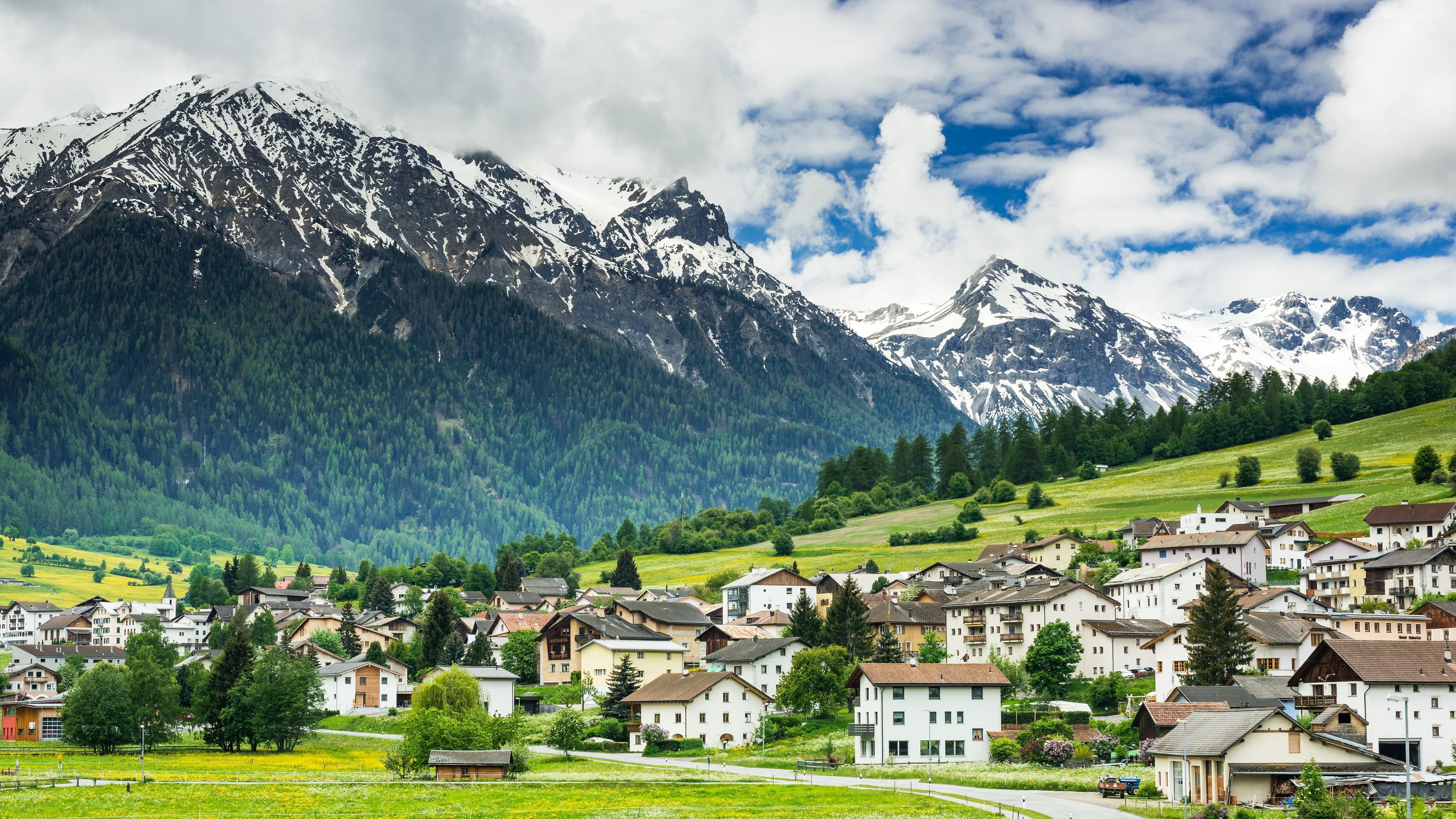
Müstair village in the Swiss Alps.
Credit: iStock Photo
The summer sky is unusually overcast when I arrive in Müstair, a picturesque town nestled in the Val Müstair valley, surrounded by the high mountains of the Biosfera Val Müstair nature park in southeastern Switzerland, bordering Italy. The dewy scent of alpine meadows greets me first, followed by the sight of bright rose boxes adorning the balconies of old homes, contrasting beautifully with the pine-studded landscape in the distance. A narrow road cuts through the town, which is home to approximately 400 residents; it’s no wonder there are only a handful of people in sight.
Reaching Müstair from Zurich takes four hours and four train transfers aboard the SBB. At first glance, life here seems simple, but as I dig deeper, I uncover a region rich in centuries-old history, surrounded by abundant nature and dedicated to sustainable living.
My first stop is Hotel Chasa Chalavaina, a traditional stone-and-wood-furnished structure originally an inn from 1254 AD, later mentioned as a place of importance during the Grisons War of 1499. Having reopened in 2022, it was recently named Historic Hotel of the Year in 2024.
It’s not just my accommodation’s past that piques my interest, but also the region’s. “Graubünden, or Grisons, is the only trilingual canton in Switzerland,” Victoria Ellmer from the local tourism board explains, enlightening me about the area’s fascinating culture. Like many locals, Ellmer commutes daily from Italy.
Besides German and Italian, Romansh — the country’s fourth language, believed to have originated around the 15th century BC — is still practised here. I’d seen traces of it on street signs earlier and heard it when my tour guide warmly greeted me with “Allegra!” (Welcome). However, nearly 40 percent of Romansh speakers have moved to places like Zürich for better job opportunities, making it rare to encounter the language outside the canton.
The next morning, I stroll down the street to the ancient Benedictine Convent of St John, its clock tower visible from a distance. Wild roses spill over the pathways, adding bursts of colour to the complex.
Once a monastery, this 1,200-year-old sanctuary has housed an all-women’s convent since the 12th century and is now inhabited by just eight Benedictine nuns.
Interestingly, it’s believed that as the valley’s settlement grew around the monastery, the town got its name from the Latin “monasterium.” Legend has it that Charlemagne founded the institution in 775 AD after surviving a snowstorm on the Umbrail Pass. Grateful for his safe passage, he laid the foundation stone shortly after being crowned king of the Lombards. The adjoining monastery church from the Carolingian period is remarkable, showcasing the largest and best-preserved fresco cycle from the early Middle Ages, a distinction that earned it UNESCO World Heritage status. It also features a stucco statue commemorating Charlemagne.
Pressed for time, I decided to skip the museum that exhibits art treasures of the past and instead explore another local delight.
Cows graze in open fields, a waterfall gushes nearby, and the Italian countryside is visible in the distance. Amid the surrounding lushness sits Chascharia Val Müstair, an award-winning cheesemaker that no visit to the region is complete without experiencing.
I meet Janic, known as “Big Cheese,” one of Chascharia’s six-member staff, who takes me on a tour of the Swiss cheese factory specialising in raw milk and organic cheese since 1921.
“Every year, 12 dairy farmers from the valley supply us with around 1.5 million litres of cow’s milk and 5,000 litres of goat’s milk,” he explains. These farmers, each managing 20-30 cows, have committed to organic practices since 1996.
“Their cows, grass and hay-fed, spend summer at 2,000 metres in the Alps, returning in mid-June and descending in September for winter,” he says, motioning to the grazing cows.
Originally located near the monastery, the factory faced challenges due to infrastructure limitations.
Five years ago, it moved to a new location better suited to its operations. The facade is made of natural concrete designed to withstand mudslides.
As we ascend the stairs, the walls are adorned with texts in the Romansh language and images depicting traditional cheese-making methods. From a glass window, I get a bird’s-eye view of the cheesemaking equipment below, learning about the sustainable practices in place. “Everything runs on hydroelectric power, with a small contribution from solar energy,” Janic explains. “We also use glass containers for recycling — people are motivated to return them for refunds.” I step into disinfectant water before entering the room, where Janic walks me through a day in his life.
“We produce 200-300 litres of natural yoghurt daily — it’s our best-seller,” he shares. The milk, delivered by farmers at 7 am, is heated in machines, and then processed to form cheese. The leftover whey is fed back to the cows. The highlight is the cold cellar, where over 100 tonnes of semi-hard and hard cheeses are washed and stored annually.
“There are 9,000 cheese wheels here, some weighing up to five kilos,” Janic mentions, as I sample a range of cheeses — extra ripe, naturally matured, and goat cheese — while he shares local legends of fairies gathering herbs for the cheese. It tastes as fresh as the air outside.
The true charm of the Swiss countryside lies in its simplicity, and Müstair is a testament to that beauty, proving that sustainable living and rich history can coexist harmoniously.